TPI had the privilege of being involved in five events at this year’s High-Level Political Forum (HLPF) in New York. From VNR labs examining how to adapt to shrinking civic space to discussions on the sustainability agenda post-2030, the conversations held within the halls and rooms of the UN were as meaningful and thought-provoking as ever.
With decreased international funding, and with only five years left of the SDGs, it is often too easy to construct a negative narrative around the Sustainable Development Goals. However, positive change is happening. People around the world are working hard, collaborating effectively to make real progress. In-person forums such as HLPF are more important than ever for sharing these success stories, for knowledge exchange, and for co-creating a better future.
Here are our top five takeaways from HLPF 2025:
1. A quieter HLPF signals a shift — but not the end
There is a marked shift in the global consensus that has underpinned sustainable development for the past few decades, with some of the countries that once championed this agenda now stepping back.
Despite challenges such as reduced funding, institutional uncertainty, and a shrinking civic space, the HLPF showcased numerous examples of innovation, adaptation, and new leadership emerging to fill the gap.
Together with the Global Forum, TPI’s Darian Stibbe and Tom Harrison co-hosted a VNR Lab exploring ways to bridge the growing divide between civil society and government. Participants from the Philippines, South Africa, and Germany shared invaluable insights on how to adapt, connect, and maintain civic engagement with government in difficult political contexts.
Interestingly, the quieter atmosphere allowed for more candid and reflective conversations—both in formal sessions and in the corridors and side rooms of the UN.
2. What comes after the SDGs? The post-2030 debate has begun
With five years remaining until 2030, the conversation around what follows the SDGs is now firmly underway. TPI’s Darian Stibbe co-hosted the Informal Roundtable Dialogue on Beyond SDG, which explored how we must begin shaping the post-2030 agenda now, not later.
The SDGs have been transformative, but they are not sufficient to address the increasing complexity of today’s global challenges—geopolitical fragmentation, digital disruption, and compounding environmental crises among them. The next global framework must build upon the SDGs’ foundational principles of universality, inclusiveness, and integration, while addressing their operational and governance shortcomings.
Darian introduced the concept of Transformational Development Goals (TDGs) — an approach that focuses not only on what we want to achieve, but how we transform systems to get there. TDGs aim to foster whole-of-society engagement, aligning governments, businesses, academia, and communities around shared values such as trust, equity, and engagement.
Rather than waiting until 2030, the time to rethink and redesign is now. Despite funding cuts and global uncertainties, there is a surge of fresh energy dedicated to building new models of collaboration, inclusivity, and impact.
3. Collaboration infrastructure must be built — partnerships don’t just happen
One of HLPF’s standout sessions focused on the role of higher education in advancing sustainability. The Higher Education Sustainability Initiative (HESI) Global Forum 2025 served as a stark reminder: collaboration infrastructure does not build itself.
Higher education institutions (HEIs) are uniquely positioned to drive sustainability solutions. Yet, systemic challenges persist—from access inequalities to the need for interdisciplinary, culturally grounded approaches. The HESI Partnership Framework, launched at the Forum, aims to coordinate engagement across teaching, research, and partnerships, providing a much-needed structure for collaborative action.
The key message was simple but critical: building effective partnerships requires deliberate investment of time, resources, and effort. Structures, frameworks, and bottom-up partnerships are essential, but none of it happens without changemakers stepping forward. Sometimes, it really does start with picking up the phone.
As TPI’s Darian Stibbe aptly put it: “Partnerships don’t just happen. Start small, demonstrate impact, and build momentum.”
4. Countries are making real progress on inclusive VNRs
At a Global Forum side event facilitated by TPI’s Tom Harrison, discussions on Voluntary National Reviews (VNRs) revealed promising signs of progress. Many countries are now undertaking their third VNR, and while not yet perfect, the process is becoming markedly more inclusive and participatory.
There is a growing body of knowledge on how to conduct inclusive reporting, with countries sharing experiences and best practices at HLPF. VNRs are increasingly incorporating diverse voices from civil society, including local authorities, marginalised communities, and youth.
It was encouraging to witness the enthusiasm with which countries are continuing to report, even in the face of global uncertainty. The VNR process is not just becoming more inclusive; it’s evolving into a mechanism for genuine reflection, dialogue, and learning.
5. Partnerships need systematic investment
One message echoed across all our events: partnerships remain essential — but they need systematic, structured support to thrive. Ad hoc or opportunistic collaborations are not enough. What’s required is intentional investment in partnering practice.
This is not an optional extra; instead, partnering is the foundation for delivering the transformation we aspire to. At HLPF, we heard compelling stories of partnerships making a real difference. The task ahead is to ensure they are not isolated successes, but part of a wider, well-resourced, global effort.

